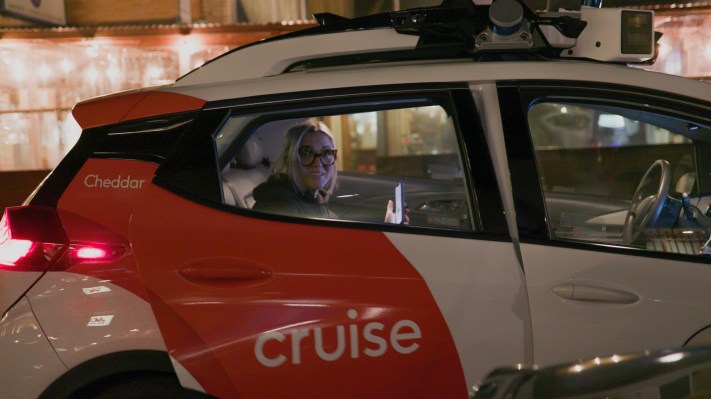A former administrator of the National Highway Traffic Safety Administration (NHTSA) has responded to a full-page ad taken out in several major newspapers by Cruise, General Motors’ self-driving subsidiary, that calls humans terrible drivers.
The ad points to the nearly 43,000 crash fatalities in 2022 and promotes autonomous vehicles as the solution.
“Using the pain and suffering of those deaths for self-promotion of an unproven and unsafe product is unscrupulous,” said Joan Claybrook, a lawyer who served as head of NHTSA from 1977 to 1981, and as president of consumer advocacy group Public Citizen from 1982 to 2009.
Claybrook called the ad a ploy from GM to recoup some of its investment in the billions of dollars spent to develop Cruise’s self-driving vehicles. According to GM’s 2022 earnings report, the automaker lost $1.9 billion on Cruise in 2022, up from $1.2 billion in 2021. GM has said it expects Cruise to bring in $50 billion annually in revenue by 2030.
Cruise published the ad last week in the San Francisco Chronicle, The New York Times, the Los Angeles Times and The Sacramento Bee. The message from Cruise came as the California Public Utilities Commission delayed, for the second time, a hearing on expanding Cruise’s and competitor Waymo’s permits to charge for robotaxi rides throughout the city 24/7, amid mounting pressure from opposition.
“You might be a good driver, but many of us aren’t,” reads the ad. “People cause millions of accidents every year in the US. Cruise driverless cars are designed to save lives.”
In the ad, Cruise points to its “1 Million Mile Safety Report,” developed with the University of Michigan Transportation Research Institute and Virginia Tech Transportation Institute to compare naturalistic human ride-hail driving to Cruise’s autonomous driver. The study found that Cruise vehicles, which have collected over 1 million miles of driving, resulted in 53% fewer collisions, 92% fewer collisions as the primary contributor and 73% fewer collisions with meaningful risk of injury when benchmarked against human drivers in a comparable driving environment.
“One million miles travelled by autonomous vehicles (AVs) at first glance may seem like a substantial amount but is less than 0.00003 percent of the more than three trillion miles driven annually on U.S. roads,” said Claybrook in a statement released by Advocates for Highway and Auto Safety. “Furthermore, it is infinitesimal compared to the 310 billion miles driven in California each year. By comparison, in one work week, human ride-hailing drivers in San Francisco were nearly tripling the one million miles Cruise took a year to accumulate.”
Claybrook called Cruise’s safety report limited and its process opaque, noting that Cruise has not released the comparative study from the universities it partnered with in the report. A spokesperson for Cruise told TechCrunch the company can’t share the study without the permission of University of Michigan and Virginia Tech, but that the company plans to provide additional information in the near future.
While Cruise’s AVs have not been in any fatal accidents while driving in San Francisco, the company has come under fire for malfunctioning vehicles stopping in the middle of traffic, blocking other vehicles, emergency vehicles and public transit. A mix of annoyed residents, San Francisco’s fire chief, the police officers’ association and the SFMTA have all expressed concerns about the safety and efficacy of AVs after many such incidents.
In response to Cruise vehicles becoming immobilized while operating on public roads and incidents when the robotaxis may have engaged in inappropriately hard braking, NHTSA last December opened a preliminary investigation into the vehicles. The agency did not respond in time to TechCrunch to provide an update.
